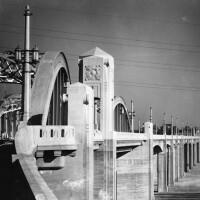Summer Workshops: Mobility and Planning and the NELA Vision Plan

The Los Angeles River is a unique social, ecological, and cultural landmark, one unlike any other in Los Angeles' urban landscape. Flowing 51 miles through various multi-ethnic communities, from the San Fernando Valley to the Port of Long Beach, its watershed hosts a diversity of land uses, from suburban to highly urbanized, commercial, industrial, and residential. It is a space that, while massive in scale, is cautiously hidden from view, traveling secretly in the shadows of the City's postindustrial growth, and often shrouded in a concrete veil throughout its journey. Fortunately, however, the City, its residents, and various non-profit groups throughout the region have taken notice of this hidden treasure and are determined to shine a spotlight on what is bound to become the City's most powerful tool of economic empowerment, social equality and ecological sustainability. The City of Los Angeles' current endeavor, the Northeast Los Angeles (NELA) River Vision and Strategic Plan, aims to do just that by utilizing the River in connecting the five diverse communities located within the NELA area, improving access and mobility in and around the River, and building a strong workforce and economic development plan in the process.
This Vision Plan aims to celebrate the existing Northeast Los Angeles River landscape by creating a plan for a continuous, linear, recreational experience, connecting some of Los Angeles' most interesting ecological assets to the communities that surround them in an effort to develop a sense of place and identity. The purpose of the Vision Plan is to provide a shared community-wide vision framework that informs elected officials, along with various City, State, and Federal agencies of future economic and recreational investment priorities. The framework will largely address issues related to physical design and urban form while considering social, environmental, and economic factors. The Vision Plan will integrate a series of overarching goals to create a planning framework. It will also recommend action steps and lay a preliminary implementation timeline for recommended catalytic and prototypical development projects intended to advance the shared Vision. The Vision Plan will serve as a basis for implementing large and small catalytic projects that will help revitalize the Northeast Los Angeles River area, as well as provide a successful case study for the entire 51 mile stretch of the Los Angeles River.
More on urban planning and development


Since the effort relies heavily on community input, the City of Los Angeles, in partnership with the NELA River Collaborative, held a series of engagement meetings within the Elysian Valley, Atwater, Glassell Park, Lincoln Heights, and Cypress Park communities, each with a different educational focus. On August 24, 2013, the focus was planning and mobility, and the meeting was held along the riverfront at RAC design studio in Elysian Valley. The meeting started with an invitation for its patrons to take a short stroll along the River greenway, to a pop-up coffee shop hosted by Cafecito Coffee. The workshop began with a short presentation and "Q-A session" on the City's goals for the Vision Plan, and continued with three stations entitled "Mobility and Transportation", "River Access and Connectivity" and "Great streets/Great Parks." Each station was designed to elicit commentary on specific Planning related topics which will inform the Planning Department's development of the goals, action agenda and catalytic projects that will be found within the Vision Plan.
During the meeting, the community members provided very tangible commentary, such as the need for way finding signage to increase security and improve accessibility to the River, as well more general commentary, such as the need to improve the relationship between the River and the surrounding residential and commercial community. By listening to the input from stakeholders, and understanding the historical context shaping these requests, the Department of City Planning will be able to develop a plan that not only represents the needs of today's NELA river community, but design a plan that is sustainable and successful to withstand future demographic and physical changes within the NELA area's industrial, residential, and commercial communities.






